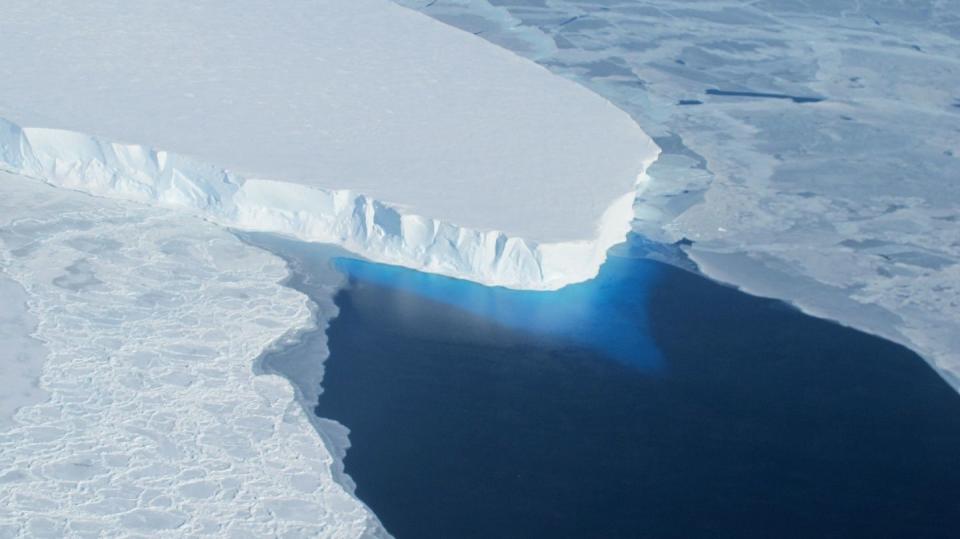Two Gigantic Antarctic Glaciers Are Breaking Free, Which Is Not Great

Just like you, glaciers are feeling the stress, growing more brittle, and starting to crack.
Melting glaciers raise the sea level and release a whole host of creepy crawlies.
Scientists combined observed data with powerful software modeling to run this simulation.
Two highly stressed and massive glaciers in Antarctica have “broken free” of some of their naturally grounded restraints, scientists say. If the glaciers continue to meander and shed ice volume, the melting could raise the sea level by as much as 10 feet. That could cover most of the Netherlands or the whole city of New Orleans, not to mention cause coastal creep around the entire world.
DIVE DEEPER ➡ Read best-in-class Earth science features and get unlimited access to Pop Mech , starting now.
First, let’s look at what’s actually happening with these glaciers. Pine Island and Thwaites glaciers are huge, although they aren't biggest in the world—those glaciers are mostly on continental landmass that includes mountain ranges. That means they’re naturally hemmed in by slopes and valleys. Ice flow (not to be confused with ice floe) will continue to spread if not confined or held in place.
On the Antarctic ice mass, glaciers are held in place by friction and much smaller anchors to the underlying landmass. It’s this fragile juncture that has broken apart for Pine Island and Thwaites. In their new paper, researchers explain how this has happened.
Think of the moment in Titanic where one of the ship’s four iconic stacks breaks from its supporting wires: one snaps and increases the burden on the rest, causing a snowball effect as more and more wires snap. In the Antarctic glaciers, “shear zones” are where the glaciers are held in place and where the most tension plays out:
“These damage areas consist of highly crevassed areas and open fractures and are first signs that the shear zones of both ice shelves have structurally weakened over the past decade. [T]he damage initiates a feedback process where initial ice shelf weakening triggers the development of damage in their shear zones, which results in further speedup, shearing, and weakening, hence promoting additional damage development. This damage feedback potentially preconditions these ice shelves for disintegration and enhances grounding line retreat.”
This means scientists are using GPS photography and mechanical models to study the way the very first cracks create weaknesses that fuel further cracks. To study how this is working in Pine Island and Thwaites, the researchers combined existing recorded observations with software that models how ice behaves. That includes the simple physics of forces like friction and shear, as well as fracture mechanics for the ice itself.
If these two glaciers alone end up in the open sea and eventually melt, they could add 10 feet to the global sea level singlehandedly. As an example, that means that while the Jimmy Buffett’s Margaritaville restaurants in Times Square or at Niagara Falls are safe, the ones in Key West and Biloxi are fully submerged. You can look at U.S. coastlines using the NOAA’s interactive Sea Level Rise Viewer.

Preventing this damage, or understanding the extent of it, is therefore tantamount in a world facing immense climate challenges. In this research, the BISICLES model (see what they did there?) combines all the glacial melt factors and then simulates them over a 100-year period. The researchers acknowledge they used an “idealized” model even more than this kind of simulation necessarily does:
“We deliberately opted for such an idealized model setup to prevent shortcomings due to unknown initial conditions of the ice shelf that could obliterate the mechanisms at work. As such, the setup leads to a greater control over the experiment to delineate the impact of damage adjacent to ice shelf weakening due to subshelf melt. [I]t enables us to comprehend the physical mechanism at work in conjunction with observed features.”
This means the scientists minimized their unknown and beginning conditions in order to closely examine the phenomenon they’re looking for—the effects that lead to larger crevasses and bigger fractures in the shear zone.
You Might Also Like

